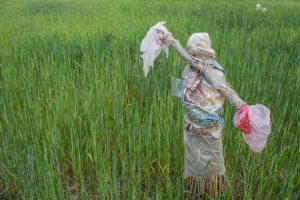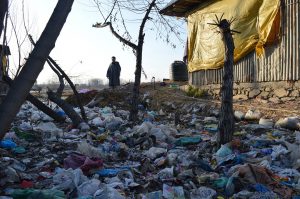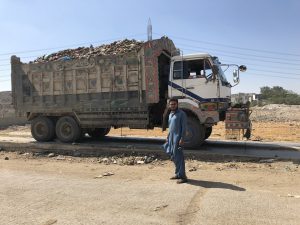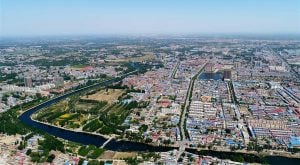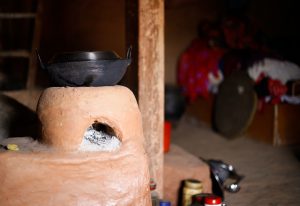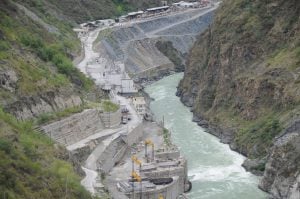A bunch of tree roots on his head, Ramzan Ali was coming back towards his polythene and bamboo hut at the Kutupalong refugee camp.
“Where did you get these roots?” I asked. Ramzan Ali said he dug them out from the forest. The Rohingya received rice and lentils from donor agencies, but they need to find the fuel to cook them.
Ali arrived at the camp in Cox’s Bazar on the southeast coast of Bangladesh last October from Buchidawng, Myanmar, with his wife and five children.
“We fled from our village when we heard the Myanmar army was coming,” he told www.thethirdpole.net.
Housed in a refugee shelter in Bangladesh, Ali goes to the reserve forest four kilometres away to collect firewood. Collecting wood and getting water is the main challenge in the Kutupalong Rohingya camp.
Some people wake up early in the morning to walk three or four kilometres to collect fuel woods, but most of the forest in the vicinity of the Rohingya camp has been whittled away in the last seven months.
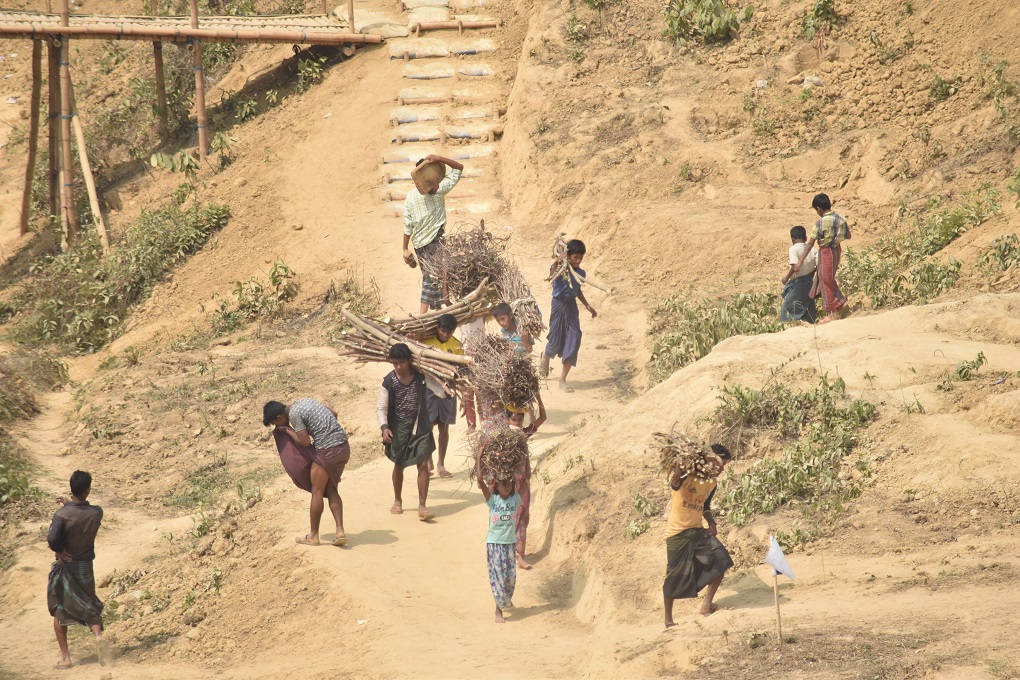
Though initially the host community welcomed and helped the Rohingya people, the various environment problems have put a strain on their hospitality.
“We understand their problems, and helped them when they arrived here. But they are creating problems for us nowadays,” said Shahin Shah, who lives in Ukhia, Cox’s Bazar.
The Bangladeshis have become minority in Ukhiya area, said Shah. Since 25 August 2017, 700,000 Rohingya people have taken shelter in Kutupalong, now considered the world’s largest refugee camp. The local population had been only about 200,000.
Mohammed Bakthtiar Hossain, a member of the Kutupalong union parishad (local assembly) said that several tube wells had been installed in Kutupalong without any plan, and without measuring the water table.
“The water table is declining. Now in many Rohingya camps people do not get drinking water from their tube wells. Sometimes they have to collect water and ration it, some of them collect in the daytime, some of them collect in the night time,” he said.
The International Organization of Migration (IOM) is directly involved in site management at Kutupalong. In a press release last week it said that they have built over seven kilometres of road, 220 bamboo bridges, seven kilometres of pedestrian pathways, five and a half kilometres of pedestrian steps with handrails, and five kilometres of drainage since the Rohingya people started coming to Cox’s Bazar.
In another release IOM stated that they had trucked 1,992 cubic metres of clean drinking water into the settlements since August 2017. They had also constructed 1,949 latrines, 110 deep tube wells and 116 wash rooms, with 28 more under construction. The IOM has also distributed 220,000 bars of soap and 30,070 hygiene kits.
Hamidul Haque Chowdhury, a principal of a local educational institution and president of Rohingya Refugee Repatriation Movement, a civil society platform that is demanding that the Rohingya be repatriated to Myanmar, told www.thethirdpole.net that the influx of such a large number of people had led to a drop in the water table.
“It was not such an acute problem in the winter. But now the water table of the area has dropped. The local community does not get water in the shallow tube wells they use to collect drinking water,” he said.
Haque added that the surface water in the entire Ukhia area has dried out. Local farmers who used to cultivate crops using surface water could not grow vegetables and other crops due to lack of water.
“Many diseases like diphtheria, which were wiped out from the land of Bangladesh, are now coming back,” he added.
Mohammed Yunush, a farmer from the Palongkhali union said that he used an electric powered deep tube well but even then he did not get enough water to irrigate his crops.
Rezaul Karim Chowdhury, executive director of Coast Trust said that in September 2017, when they installed a tube well in the Kutupalong Rohingya camp they found water 600 to 700 metres beneath the ground level.
“But now in many camps they do not get water even at 1,500 metres under the ground level. I am not sure what will happen after a couple of months,” he said.
The natural source of ground water is decreasing as so many people have used so much of water within a very short time.
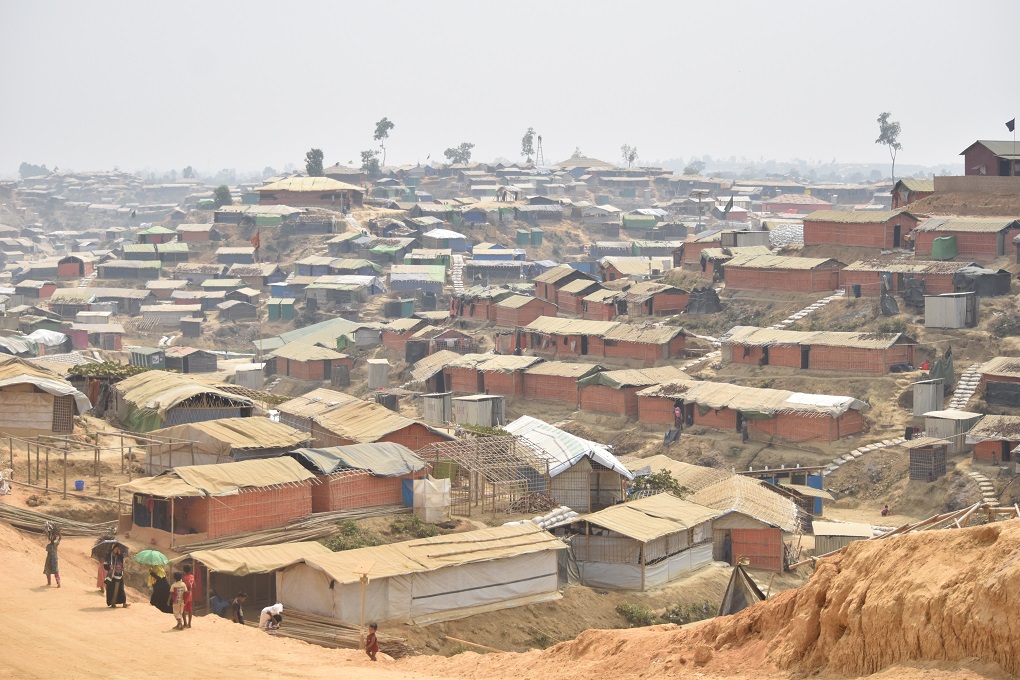
In the monsoon area last year a series of disastrous landslides in Cox’s Bazar and the adjoining hilly areas killed over a hundred people.
Greenery wiped out
Trees within a four or five kilometre radius have been removed. The Rohingya have taken to digging out tree roots, and these too are now mostly gone, in the relentless demand for firewood.
Halima Neyamat, a development worker with the Food and Agriculture Programme (FAO), visited the Rohingya camp area on 22 March. She told www.thethirdpole.net that the situation is devastating.
“There is no tree for miles after miles in the area. Everyday a few thousand Rohingya come to forest and collect firewood from the reserve forest around the camps,” she said.
Istiaq Sobhan, who looks after the environment programme at the World Bank in Bangladesh, said he visited the Rohingya camp areas several times and wonders how the refugees would cope with the situation in the near future.
“They have been collecting firewood from the nearby forests till now. But if we cannot arrange packed food for all the refugees or arrange community kitchen for them, it would very hard to control the situation as there are roughly around 100,000 families living in Kutupalong area,” he said.
“Besides that, their tube well and kitchen are located within just a few metres. What will happen when the monsoon comes? All the excreta will spread out and pollute the surface water system around the Cox’s Bazar. A great disaster will take place if proper measures are not taken,” he said.
![<p>The daily slog to get firewood begins early in the day for the Rohingya refugees [image by: Mokammel Shuvo]</p>](https://dialogue.earth/content/uploads/2018/03/Roh1.jpg)

